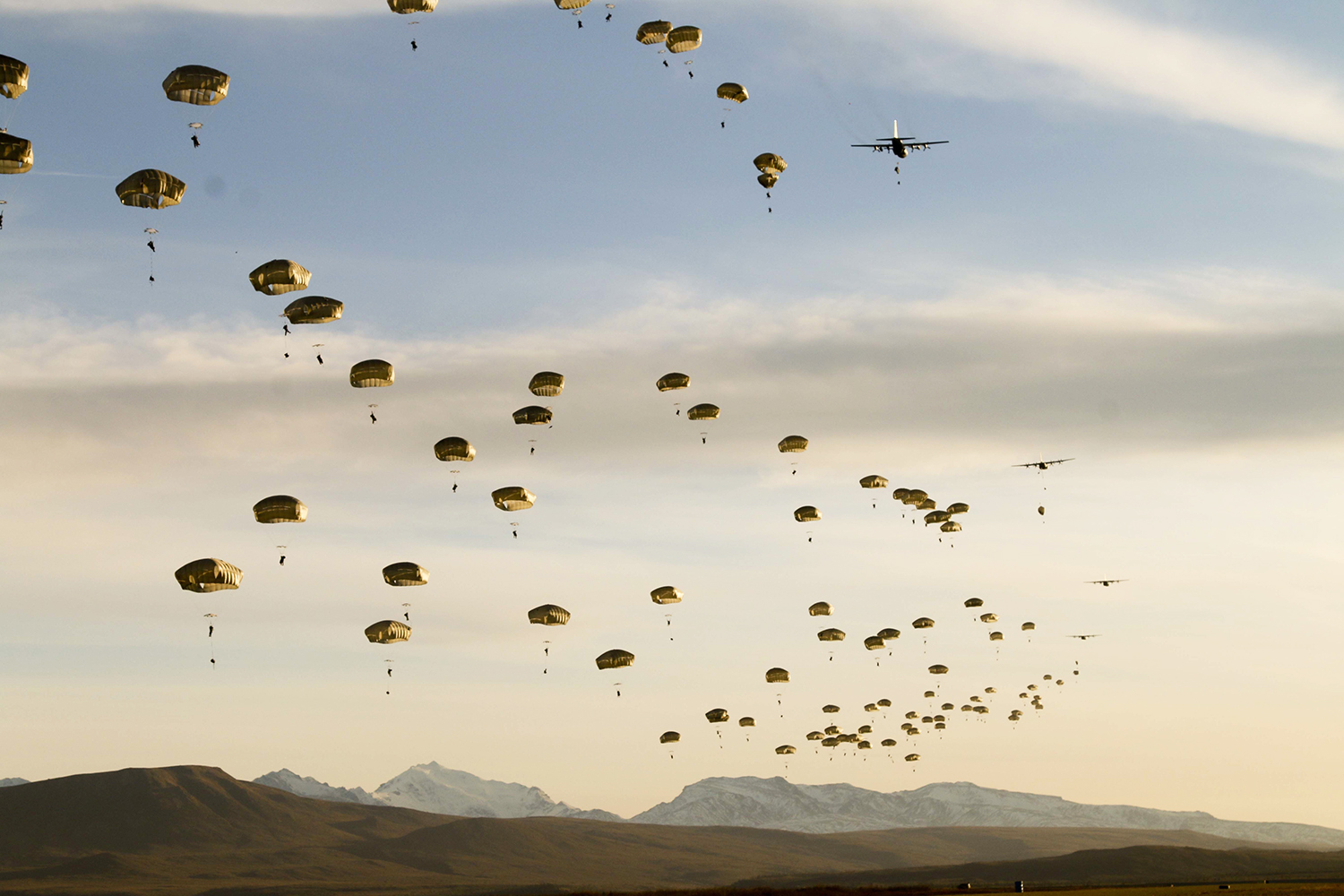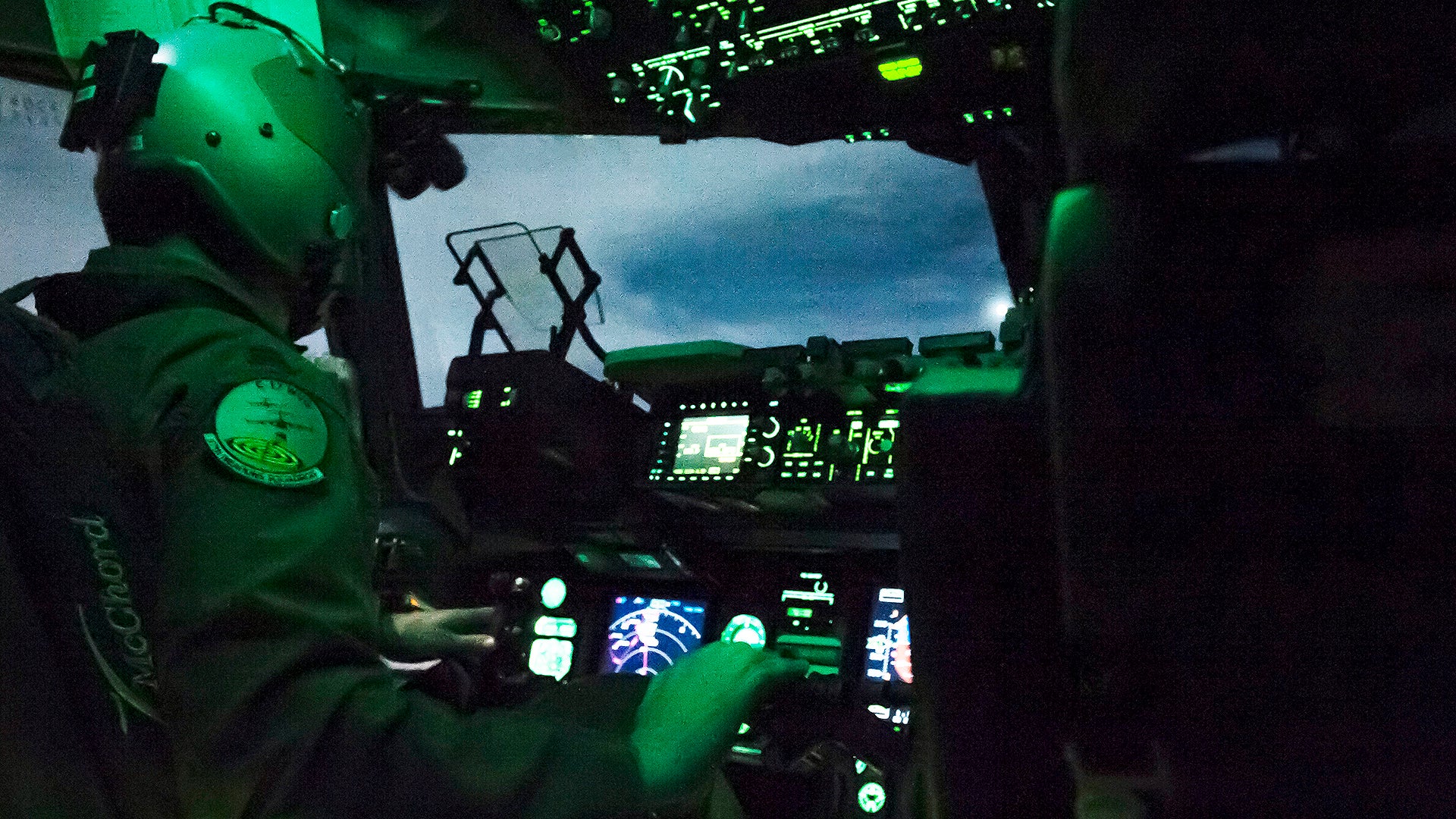From South Carolina to Missouri to Denver to Utah and beyond, reports popped up last night from people seeing large formations of lights in the sky heading westward. Considering it’s about two weeks too soon for Santa to be on the job, and taking out a Red Dawn scenario or an alien invasion, people were puzzled as to what they were actually witnessing. Well there’s no reason to worry as we can confidently report that the objects in question were dozens of USAF transport aircraft heading towards Nellis AFB, the Nevada Test and Training Range (NTTR), and other locations out west, likely as part of a well established large-scale air power exercise that focuses on America’s unique airlift abilities.
The sightings began on early Saturday evening around on the east coast and slowly moved west as time went on. Tweets began springing up from all over with concerned citizens not knowing exactly what they were seeing. Local news stations jumped on the story, and began asking the same questions as those who were spotting the strange aerial phenomenon.
Our good Twitter friends @Aircraftspots, who always have a keen eye on aircraft movements around the U.S. and beyond, were following the action closely. By around midnight they were tracking no less than 30 C-17s and 20 C-130s making their way across the country towards Nevada.
Such a mass migration of cargo aircraft towards NTTR is indicative of one major training event in particular—Joint Forceable Entry Exercise (JFEX). JFEX occurs around this time of year—and in June—as a capstone event for USAF Weapons School classes. Think of these courses as Topgun but for all types of USAF communities and longer, not to mention even more academic.
In the case of JFEX, primarily cargo haulers and heavy transports take the center stage over fighters or bombers. Students plan and lead these exercises as part of the school’s “graduate level” curriculum which is notoriously demanding. The hope if that at the end of all of it each student will graduate with the lauded title of Weapons Instructor for their specific platform, also known as the “Target Arm” in many units. Being able to proudly wear the coveted Weapons Instructor patch is also a huge added bonus.



JFEX in particular has progressively become more relevant with every iteration. The idea behind it is to train as a large force, while incorporating elements from across the Defense Department’s combat domains, to break through an enemy’s anti-access bubble and setup a foothold in their own backyard. Hence the name “Forceable Entry.”
This is done principally by using America’s unique airlift capacity. Often times forward operating bases are setup on the Nellis Range Complex and at a number of locales around the country, where C-17s and C-130s will be guided in by USAF Combat Controllers, just as if they would in a real scenario. Other transports will make airdrops of all sorts, including executing large-scale airborne assaults.
For units heading to NTTR as part of the exercise, fighters and attack aircraft will provide cover and suppression of enemy air defenses for them, and other aircraft will provide surveillance, command and control, and electronic warfare support. Ground combat units are a key component of JFEX as well. It is the quality of this entire ultra-complex “package,” and its implementation for a common set of scenario-based objectives that the Weapons School students will be judged on.

I wrote a previous piece detailing JFEX in 2014 which you should take a look at, and in it I quoted Capt. Cliff Caldwell, 62nd Operations Support Squadron wing weapons and tactics director, stating:
“This is day one and night one of the war… This is us going in and taking all the training that we do and putting it all together and focus on application of combat skills.”
What makes this particular iteration of the exercise, or another drill very similar to it, somewhat different is that this high-profile nation-spanning portion of it is occurring at night. This makes total sense though as this is likely when such a large-scale mission would occur during wartime, and there are some very important benefits and challenges posed by executing such an operation under the cover of darkness. A side effect of this is that people all over the U.S. were seeing strings of lights in the sky heading west without any explanation.

In retrospect, what’s actually pretty cool is that these folks were lucky enough to see what America’s air force is capable of in a time of war. The USAF’s ability to rapidly project immense power into remote places is a very strong deterrent in itself, and a very important capability to have available should the need arise. During a major peer-state conflict, especially one against say China, where the vastness of the Pacific region can either work against or for you, these types of tactics will be critical to success.
With the USAF’s transport aircrews ready to inject major military power virtually anywhere with a dirt strip long enough to accommodate a C-130 and/or C-17, it opens up a whole new set of options for commanders and keeps the enemy from being able to neuter America’s regional combat capability just by barraging master air bases with ballistic missiles and other long-range weaponry.
We have contacted the USAF for comment and are awaiting a reply. We will update this post with more information as we receive it. In the meantime keep looking up!
Contact the author: Tyler@thedrive.com
